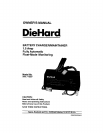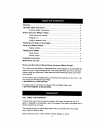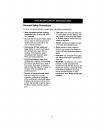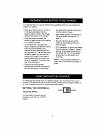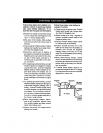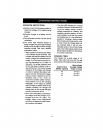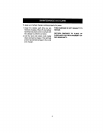
It is important that you read and follow these guidelines while you are preparing to
charge your battery.
• Make sure that you have a 12 volt or
6 volt lead-acid battery. Set the
selector switch to match the voltage
rating of the battery to be charged.
• Clean the battery terminals. Be
careful to keep corrosion from getting
in or around your eyes.
• For batteries with removable cell
caps, if required, add distilled water to
each cell until the battery acid
reaches the level recommended by
the manufacturer. This will help purge
excessive gases from the cells. Be
careful not to overfill. If you have a
sealed battery without cell caps, no
action is necessary. Continue to the
next step listed below.
• Take time to read all battery
manufacturer's specific precautions,
such as removing or not removing
cell caps while charging, and recom-
mended rates of charge.
• Wear safety glasses. See additional
"Personal Safety Precautions" on
page 4.
• Be sure that the area around the
battery is well ventilated while it is
being charged.
• If it is necessary to remove the battery
from the vehicle to charge it, always
remove the grounded terminal from
the battery first. Turn off all vehicle
accessories to avoid sparks from
occurring.
NOTE: A marine battery installed in a
boat must be removed and charged on
shore.
To obtain the best results from your battery charger, you must know how to use it
properly. This section willtell you how to set the controls, how to charge a battery in
or out of a vehicle, and how to use the engine start feature.
SETTING THE CONTROLS
SELECTOR SWITCH:
A 2-way switch is used to set the
charger for a 6 VOLT or 12 VOLT
battery,



